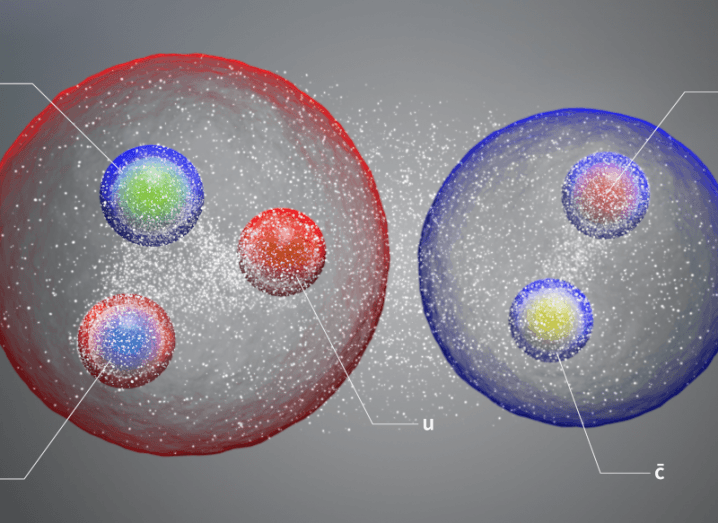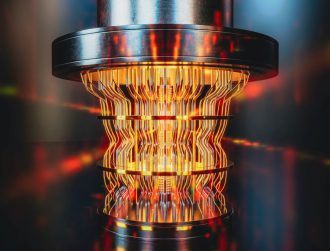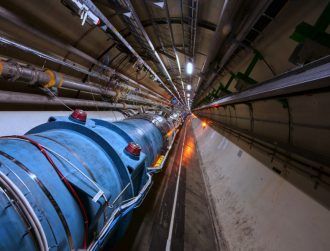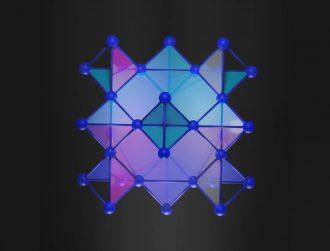
The new pentaquark illustrated as a pair of standard hadrons loosely bound in a molecule-like structure. Image: CERN
10 years after the Higgs Boson was discovered, scientists at the Swiss particle collider have discovered three new types of exotic hadron.
Scientists working at the Large Hadron Collider have discovered three new “exotic” particles, observing configurations of quarks that have never been seen before.
Quarks are elementary particles that combine to form the protons and neutrons present in atoms. They are among the tiniest particles known to humans.
These quarks typically combine together in twos or threes to form protons and neutrons, but more rarely can combine into four-quark and five-quark particles, or tetraquarks and pentaquarks.
These exotic hadrons were predicted by theorists at the same time as conventional hadrons, about six decades ago, but only relatively recently have they been observed at the Large Hadron Collider in Switzerland, where the Higgs Boson was discovered 10 years ago.
Scientists at the Large Hadron Collider have now observed a new kind of pentaquark and the first-ever pair of tetraquarks, which also includes a new type of tetraquark.
These were discovered at the Large Hadron Collider beauty (LHCb) lab at CERN, which investigates slight differences between matter and antimatter by studying particles called the ‘beauty quark’ or ‘b quark’.
The discoveries add three new exotic members to a growing list of new hadrons found at the particle collider, which will help physicists better understand how quarks bind together into these composite particles.
“The more analyses we perform, the more kinds of exotic hadrons we find,” said Niels Tuning, a physics coordinator at the LHCb lab.
“We’re witnessing a period of discovery similar to the 1950s, when a ‘particle zoo’ of hadrons started being discovered and ultimately led to the quark model of conventional hadrons in the 1960s. We’re creating ‘particle zoo 2.0.’”
The pentaquark discovered is the first pentaquark found to contain a strange quark – one of the six types of quarks. Meanwhile, the new doubly electrically charged tetraquark, which was discovered paired with its neutral counterpart, represents the first time a pair of tetraquarks has been observed.
“Finding new kinds of tetraquarks and pentaquarks and measuring their properties will help theorists develop a unified model of exotic hadrons, the exact nature of which is largely unknown,” says LHCb spokesperson Chris Parkes. “It will also help to better understand conventional hadrons.”
10 things you need to know direct to your inbox every weekday. Sign up for the Daily Brief, Silicon Republic’s digest of essential sci-tech news.






